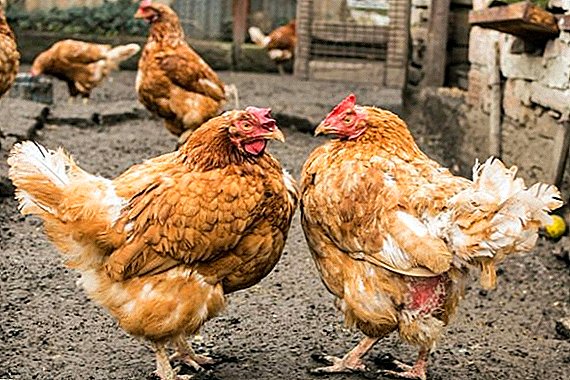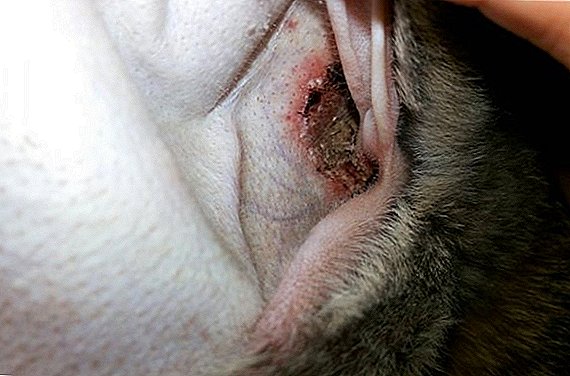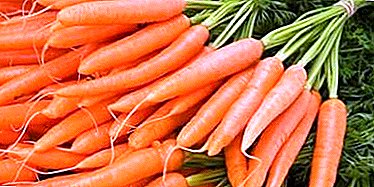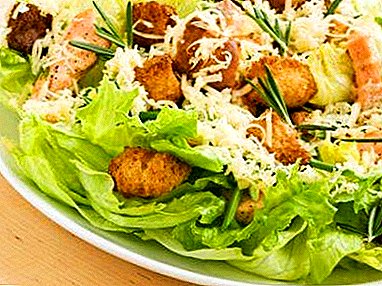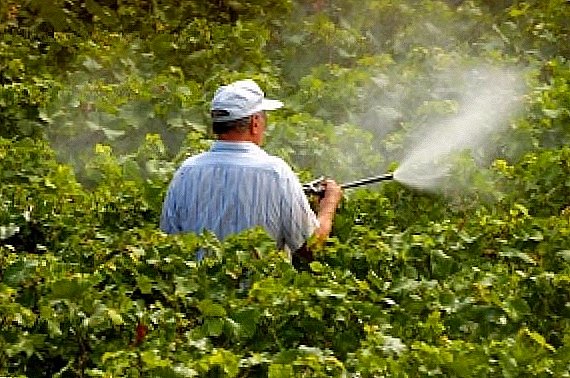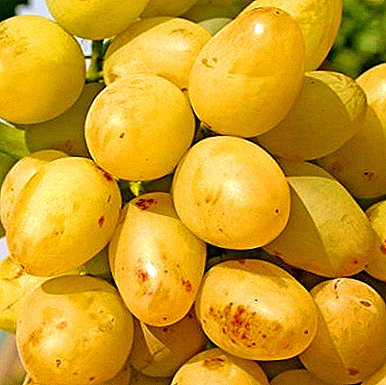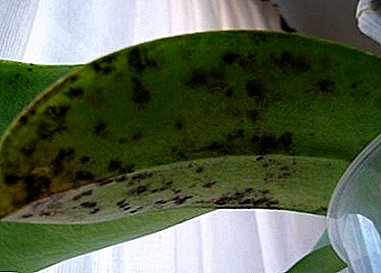 Cows in small and large farms are often given rough or poor-quality feed, which leads not only to weight loss and milk yield, but also to various diseases, one of which is pre-anastony atony. Then you will find out what the illness is, why it appears and how to treat it.
Cows in small and large farms are often given rough or poor-quality feed, which leads not only to weight loss and milk yield, but also to various diseases, one of which is pre-anastony atony. Then you will find out what the illness is, why it appears and how to treat it.
What it is
Atony of foreskins is a functional disorder of the digestive organ, which is expressed in the reduction of the contractile movements of such components of the stomach as the grid, book and scar. As a result, food is digested much longer, and due to prolonged stagnation, putrefactive processes appear.  The structure of the stomach of a cow
The structure of the stomach of a cow
Causes
There are the following phenomena that may lead to the development of the disease:
- a sharp transition from one type of feed to another;
- dirty or cold water;
- feeding exclusively roughage;
- mold feed;
- stall maintenance without walking.
Find out what cows are sick of.
Symptoms and course of the disease
Since digestion of food slows down, the cow has characteristic symptoms that indicate ailment:
- loss of appetite or lack of it;
- the scar moves poorly, and there is a seal upon palpation;
- rare defecation;
- weight loss is observed;
- increase in body temperature to 40-41 ° C;
- a sharp decrease in the volume of milk.
 Nutrients do not enter the bloodstream, therefore, weight is reduced, and milk production is reduced and stopped. Food rot in the stomach leads to inflammation of the scar, book and mesh. Also, against the background of the disorder, bacterial or fungal diseases can occur.
Nutrients do not enter the bloodstream, therefore, weight is reduced, and milk production is reduced and stopped. Food rot in the stomach leads to inflammation of the scar, book and mesh. Also, against the background of the disorder, bacterial or fungal diseases can occur.Important! The acute form can become chronic, which threatens the general intoxication of the organism of the animal.
How to confirm the diagnosis
Atonia can only be diagnosed by a veterinarian who conducts a general examination and also interviews the owners of the animal. It is important not to confuse atony with traumatic reticulitis, which occurs as a result of the rupture of the mesh with a sharp object absorbed along with food.
The veterinarian performs palpation, and also measures the number of cuts in the scar. If the number of contractions is less than it should be, organ dysfunction is ascertained. Then the specialist examines the symptoms to eliminate infectious, fungal and parasitic diseases.  Testing does not give results, since we are talking about the dysfunction of the organ, and not about the activity of any pathogenic organisms. Only in some cases can the doctor take tests if an infection is suspected.
Testing does not give results, since we are talking about the dysfunction of the organ, and not about the activity of any pathogenic organisms. Only in some cases can the doctor take tests if an infection is suspected.
Did you know? Cows cause more damage to the ecology of the Earth than all transport combined. During their lives, animals emit a lot of methane, which warms up the planet 20 times faster than carbon dioxide.
How to treat atony of anterior gizzards in cattle
Consider the options for the treatment of atony, as well as actions aimed at resolving the work of the ankens.
Veterinary drugs
At the initial stage it is necessary to remove rotting food from the stomach. To do this, apply a 1% solution of sodium sulfate or sodium bicarbonate in a volume of 30-40 liters. To conduct washing the veterinarian must, so that the condition of the animal does not deteriorate. If the cow's blood pressure has decreased, then sodium chloride solution is injected intravenously (the concentration is determined by a specialist). This allows not only to bring the pressure back to normal, but also to eliminate intoxication, as well as to strengthen the rhythm of reducing the scar and neighboring organs.  After removal of food debris from the stomach, it is necessary to strengthen the motor-secretory activity of the digestive tract. To do this, subcutaneously or orally injected infusion rhizome of hellebore (about 5 ml). Included in the drug substance stimulate scar reduction. To restore the metabolism, 40% glucose solution (300 ml) and 10% calcium chloride solution (150 ml) are injected intravenously. Caffeine (10 ml) is injected under the skin.
After removal of food debris from the stomach, it is necessary to strengthen the motor-secretory activity of the digestive tract. To do this, subcutaneously or orally injected infusion rhizome of hellebore (about 5 ml). Included in the drug substance stimulate scar reduction. To restore the metabolism, 40% glucose solution (300 ml) and 10% calcium chloride solution (150 ml) are injected intravenously. Caffeine (10 ml) is injected under the skin.
Important! The tincture of the rhizome of hellebore is used in traditional veterinary medicine, and the drug itself can be purchased at a vet pharmacy.
Folk remedies
Folk remedies used to treat this ailment have a positive effect on the functioning of the scar, books and nets, but they are not able to remove toxins from the body. For this reason, before using any folk remedies, you must wash the stomach of a cow.
Stimulating mixture. It is necessary to mix 50 ml of medical ethyl alcohol (in any case not methyl), 100 g of yeast and 200 g of sugar. Add the mixture to 1 liter of water, mix and give to the cow. You can give again in 1-2 days, no more than once a day.  Improving apatite and scar motility. Give 2-3 times a day cucumber, tomato or cabbage pickle in its pure form in a volume of 300-400 ml. They offer vodka diluted in water in the amount of 100-150 ml per day. Alcohol drink disinfects the stomach, and will also cause additional cuts.
Improving apatite and scar motility. Give 2-3 times a day cucumber, tomato or cabbage pickle in its pure form in a volume of 300-400 ml. They offer vodka diluted in water in the amount of 100-150 ml per day. Alcohol drink disinfects the stomach, and will also cause additional cuts.
Proper nutrition
Until the condition of the animal stabilizes, it is forbidden to feed it. They offer exceptionally clean water to prevent dehydration. When the stomach is cleared, and the inflammatory processes are eliminated, food can be offered. Give greens, chopped root vegetables, high-quality hay. Feed, if offered, in small quantities. Straw and other types of roughage are completely excluded.  During recovery, it is important that the cow does not overload the organ of digestion, therefore, in the first days, food is given in limited quantities. Overeating will lead to re-inflammation of the scar, books and grids, which can lead to a relapse of atony.
During recovery, it is important that the cow does not overload the organ of digestion, therefore, in the first days, food is given in limited quantities. Overeating will lead to re-inflammation of the scar, books and grids, which can lead to a relapse of atony.
Walking and Massage
The cow needs to be made to move in order to restore scar motility faster. If the animal is constantly lying, the treatment may not give results. Walking should continue at least 20-30 minutes, 2-3 times a day. A sick individual is given a massage of the left entrapment for 10–20 minutes, 2–4 times a day. Slow circular motions massage counterclockwise. The procedure can be combined with cold enemas.
Did you know? The cows sense the magnetic field of the earth, so during feeding or resting they are located along its lines, from north to south. A similar feature is also observed in roe deer and deer. In fact, cows have a built-in compass.
Preventive measures
To prevent the occurrence of this disease is recommended:
- Do regular walking of livestock.
- Monitor the quality of feed.
- Normalize the amount of food.
- Form a balanced diet.
- Straw to give in steamed form.
- Provide clean water for livestock at an acceptable temperature.
Pancreas atony is a dysfunction of the stomach, which occurs due to negligence or inexperience during the keeping of animals. The disease is easy to cure, but its chronic form will affect the productivity of the animal, so it is important to follow the rules and norms of feeding, as well as take the cows to the paddock.


